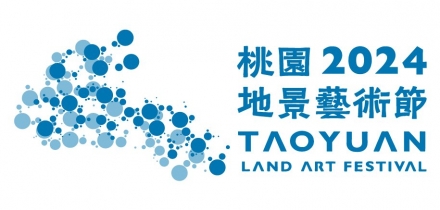2015 Taoyuan Land Art International Forum
2015.9.29
After two years of full-steamed operation, it is time to rethink the sustainability of Taoyuan Landscape Festival and its future direction. Just before the forum, 6 artists from Taiwan and abroad are invited for a short residency into various communities in Taoyuan. They are Sakarin Krue-on (Thailand), Arya Pandjalu (Indonesia), Marvin Minto Fang, Jui-mao Huang, Julie Chou and Yuyo Pan. They will lead the communities to observe their hometown with alternative perspectives, hence to re-discover the correlation of people and their environment. “Art as Strategy: actions on instilling value to local culture landscape” Taoyuan Landscape International Forum aims to investigate art as way to open dialogue for strategy towards a sustainable society. We are honored to have French curator and critic Catherine Grout and Japanese artist Tadashi Kawamata as keynote speakers to share their best practices. We will also hold panel discussions with participation of Taiwanese curator Margaret Shiu, Mali Wu, Hai-ming Huang, resident artists this year and communities activists to talk about how Taoyuan Land Art Festival could be of help for local development, and make Taoyuan a site of choice to present creative ideas.
-
Keynote speech
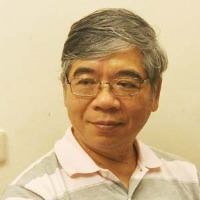
MODERATOR
Huang Hai-mingRecently retired from National Taipei University ofEducation, Huang is still active as art critic and curator,and also director of Nanhei Gallery, an importantalternative exhibition space in Taiwan.Huang considers city as a big stage for our daily life andhimself an observer. Since year 2005, he turns thedistrict around Nanhai Gallery into an experimental arena for the concept, andfinds solutions for contradictions of urban development through micro actions andinterventions. Huang Hai-ming is also a music lover, spending a lot of time playinginstruments like keyboard, saxophone and electric guitar.
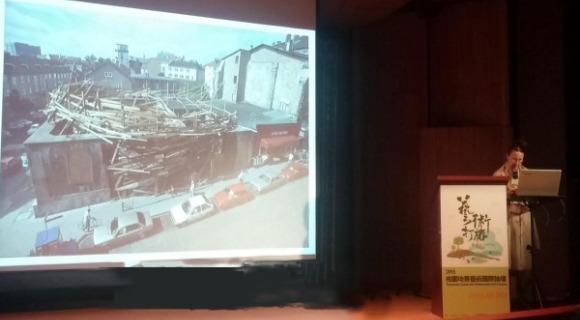
Keynote speech 1:Togetherness
Presenter:Catherine Grout
Multiple interests, aims and purposes can be recognized and analysed concerningthe presence of art and of artist in urban space and public realm. Among others itcan be: giving a kind of dynamism or impulse, telling a story, changing things into aspectacle, symbolising or publicizing a turn, enjoying something beautiful, dealingwith memories, destabilisation of the unquestioned ideas and habits. It can be partof a touristic management, of a change into the society and the urban planningand/or of a profound need for something unknown that transforms us. I would liketo propose that one of the most important meanings is related to a certain way ofbeing, as being-in-relation, or part-of-the-world, situated within.
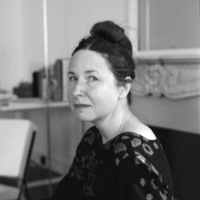
Presenter
Catherine GroutWell trained in art history and aesthetic, Catherine Grout is specialized inlandscape (paysage) with outreach in various fields such as architecture,environment and urban development. She is also independent curator andhave organized many exhibitions in public space to reactivate the sensualexperience in our daily life, such as Contemporary Art Biennal of Enghien-les-Bains in Paris (1993-2004) and Zhuwei Environment Festival in Tamsui (2002)in collaboration with Bamboo Curtain Studio. Her two publications in Chinese“Pour de l’Art dans Notre Quotidien – des oeuvres en milieu urbain” (Yuan-liou,2002) and “Representations et experience du paysage” (Yuan-liou, 2009) bothhave great influence to Taiwan art field.Catherine Grout is currently professor of Aesthetics and researcher in NationalSchool of Architecture and Landscape in Lille, France.
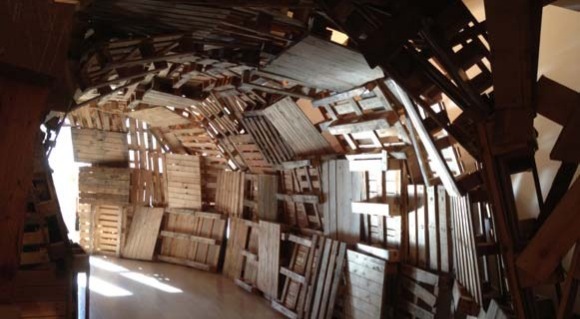
Keynote speech 2:Inter-Local Experience through Art Work Production
Presenter:Tadashi Kawamata
Art Comes from Asking
What I pursue is art that can manifest unique features of the place; in other words,I am looking for art that is right for the place. “Please come and create for us.” Withinvitations by various communities, I have visited towns and villages all around theworld.Wherever I go, I always interact with local citizens and study local history beforeconducting art creation. I believe art comes from asking. Through the questionsasked by me, a foreigner, the local features will emerge. For example, let’s say thevillage is known for apples, I will ask, are the wooden cases farmers used to containapples in the past unused and stored in warehouses? I’ll ask them to collect thecases, or try to pile the cases up. Or, if there is an old community nearby beingdemolished, I will say to them, there must be lots of unwanted building materials,let’s make use of these discarded materials and try to assemble them into astructure.Of course, people may not always listen to my suggestions, and sometimes therewill be some friction. However, it is through this kind of opportunities that the localcitizens can rediscover history, and get more people together to exchange opinions.Art is like spices; without it, life goes on, but the important thing is how to use art tofurther enhance and exhibit local features.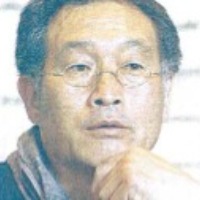
PRESENTER
Tadashi KawamataBorn in 1953.At the youthful age of 28 he was chosen to be a participating artist in theVenice Biennale. Having since taken part in Documenta and internationalexhibitions, he has achieved high acclaim in Europe and around the world.Today he is an important artist and indispensable presence within a growingtrend in art to value the production process and participation in society andhistory.Kawamata's work transcends the art context and extends to fields such asarchitecture and city planning, history, sociology, everyday communication,and even medical treatment.2000, Japan Arts Foundation Encouragement of Contemporary Art Awards.2013, the Minister of Education Award for Fine Arts.2014, L'ordre des Arts et des Lettres, (Officier)
Panel discussion
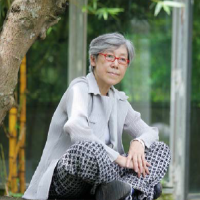
Moderator
Mali WuBorn in Taipei, Wu Mali had art education at theNational Art Academy in Dusseldorf, Germany.Deeply influenced by the social political movementin the 80’s in Taiwan, she valued the artist’s role insociety. A series of installation works developed atthis time explored from gender perspective, thehistorical narratives on home/land issues.From year 2000 on, she is keen to develop sociallyengaged art projects, working with NGOs and focusing on how art can have inputinto the public sphere.Wu’s works have been widely exhibited internationally, e.g. Venice Biennial,Taipei Biennial and Asian Pacific Triennial. She has received Taishin Visual ArtsAward in 2013.Wu is teaching at the Graduate Institute of Interdisciplinary Art, NationalKaohsiung Normal University, Taiwan.
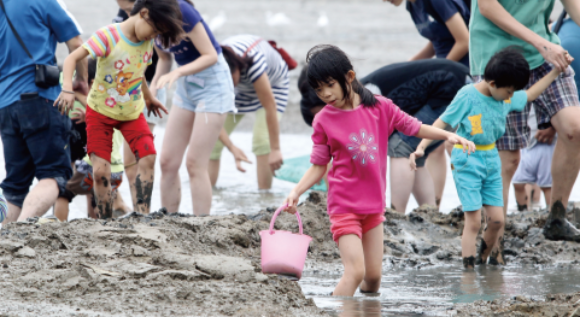
Panel discussion 1:Art from Our Daily Life
Panelists
Wen-chih Wang, Arya Pandjalu, Yuyo Pan, Li-chuan WuModerator
Mali Wu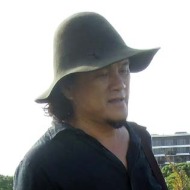 Speaker
Speaker
Wen-chih WangWang, Wen-Chih was born in 1959 in Chiayi, Taiwan.He represented Taiwan at the 2001 Venice Biennaleand has been selected in a number of major publicart projects. His work has been exhibited in Asia(Taiwan, Japan), Europe (France, Italy, Austria, theCzech Republic), America (United States, Canada)and Australia. his oeuvre lies in Asia, the land fromwhich he was nurtured, for art is always an extensionof the reasoning behind where it was created.Bamboo is of vital importance in Wen-Chih Wang’s works, and he skillfully exploitsits flexibility and strength as well as its graphic qualities. A self-proclaimedcraftsman who “puts what he knows how to do into contemporary art”, Wang Wen-Chih creates works at the intersection of painting, landscape design, architectureand sculpture. With their succession of changing viewpoints out onto thesurrounding environment, they both appeal to and surprise the spectator.
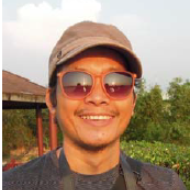 Speaker
Speaker
Arya Pandjalu
Resident ArtistsAryaPandjalu studied print making at the Indonesia Instituteof the Arts, Yogyakarta, graduating in 2005. His work focuseson social and personal story telling through installation, printmaking, painting, sculpture and performance. He used to playwith different medium to transfer and transform his ideas. Butlately his focus is on working with paper because it is a simpleand unique medium which can be found in many traditionsand is above all environment friendly. For him working with paper is like going backto childhood which inspires him to making art works.He has participated in the Sama-Sama Mural Project 2003 in San Francisco,Landing Soon Residency programme at Cemeti Art House in Yogyakarta in 2006,and in 2010 a residency at Kosmopolis in The Netherlands.
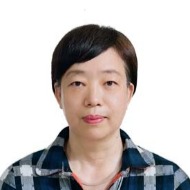 Speaker
Speaker
Li-Chuan WuAs director of “Fu-kang People andFarming Salon”, Li-Chuan Wu is also advisor to Taoyuan CultureFoundation and to China Floral Art Foundation.She is keen to promote organic life in Taoyuan region.
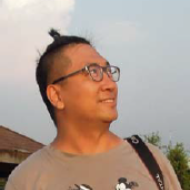 Speaker
Speaker
Yuyo Pan
Resident ArtistsBorn in 1976, Yuyo Pan is artist who lives and works inTaipei. He uses Chinese ink painting to express thelandscape of everyday life with an overpretentious elegance. In his latest works with acrylic,one can see a world in-between the reality andimagination, and the hero is contemplating his heartwhile lost in the urbanization. Ever since his graduationfrom school, Yuyo also started to focus on the correlationbetween human landscape and local heritage ingeneral. Some of the results became mural paintings and intrigue people’sreflection toward the sitting environment. He has participated in TaoyuanLandscape Art Festival in 2013.
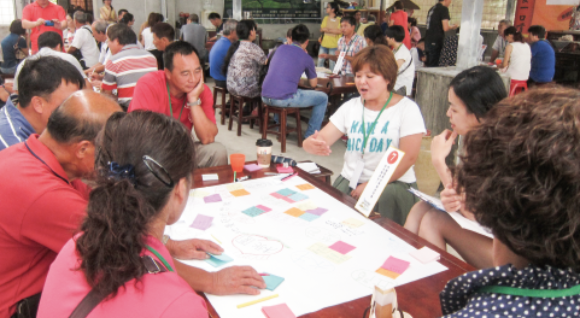
Panel discussion 2:Characteristic and Landscape ofTaoyuan
Panelists
Chia-hung Hsiang, Sakarin Krun-on, Jui-mao Huang, Julie ChouModerator
Mali Wu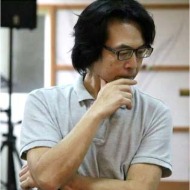 Speaker
Speaker
Jia-hung HsiangHsiang is funder and executive director of SparkleStudio and vice-chairman of Taiwan CommunityAlliance. He’s specialized in rural area revitalization,cultural and creative industry and culture study. Healso has been directors for many special projects inlocal regeneration since year 2001.
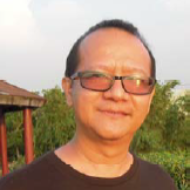 Speaker
Speaker
Sakarin Krue-on
Resident ArtistsSakarin Krue-on is a contemporary Thai visual artist. Hisworks are often site-specific installations with traditionalThai cultural influences. He won the Silpathorn Award in2009.Krue-on is an art instructor, an advisor for postgraduatestudents, and the Associate Dean of the Faculty of Painting,Sculpture and Graphic Arts at Silpakorn University. Krue-onresides and works in the metropolitan area of Bangkok, although his projects andexhibitions frequently take him out of Thailand.He is a follower of Silpa Bhisari. In 2014 he is a professor at Columbia University’sSchool of the Arts.
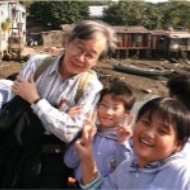 Speaker
Speaker
Huang Jui Mao
Resident ArtistsJui-mao Huang is Dean of ArchitectureDepartment of Tamkung University and funder ofCommunity Action Team. He specializes inurban and community design, and conductsmany research projects and practices in relatedfield, such as environment education programs,civic actions and transformation of public space.He funded “Community Action Team” in 1993 to be able to take part in authenticreform in urban area. He has been devoted to many community actions in Tamsuiand helps the local authority to put creative city concept into practice whilepreserving the culture heritage.
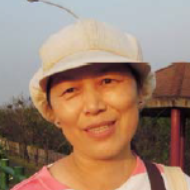 Speaker
Speaker
Julie Chou
Resident ArtistsArtist, researcher and writer. Julie has been participatedin “Art as Environment – A Cultural Action on Tropic ofCancer 2007 & 2008” and took a residency in ruralvillage Donghouliao, Chiayi, Taiwan. She learned aboutorganic farming and grew great interests in ecological,environmental and communal issues since then. In2009, she took a research trip to Britain on its ecologicalart development and published a book of the researchin 2012. Julie has many artist residency's experiences. She also works withcommunities nationally and internationally, including Japan.
Roundtable discussion:Taoyuan Landscape Festival Outlook
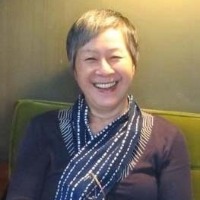
Moderator
Margaret ShiuWith a background in economy development andartist herself, Margaret Shiu is the founder anddirector of Taiwan's Bamboo Curtain Studio which justcelebrated its 20th anniversary. It is a residencyprogram, and also an international cultural exchangeresearch and facilitation hub. The studio promotespublic and private support for international exchange.Margaret's vision is to promote art and culture as vitalcomponents for global understanding, andlocal sustainability, by sharing, connecting and co-creating new practices. LocalAction: Global Connection is the mission for the past 20 years. The studio focuseson serving talents by providing artists with time and space for creativeincubation. Margaret serves as a regional representative of TransCulture Exchangein Boston. She also works closely with the Taiwan Ministry of Culture and Taipei citygovernment on cultural policies for support of creative talents.
